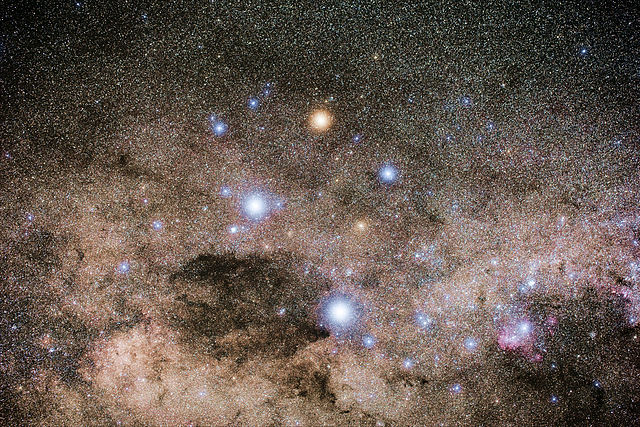Acrux is the brightest star in the southern constellation of Crux. It has the Bayer designation α Crucis, which is Latinised to Alpha Crucis and abbreviated Alpha Cru or α Cru. With a combined visual magnitude of +0.76, it is the 13th-brightest star in the night sky. It is the most southerly star of the asterism known as the Southern Cross and is the southernmost first-magnitude star, 2.3 degrees more southerly than Alpha Centauri. This system is located at a distance of 321 light-years from the Sun.
The constellation Crux
Crux is a constellation of the southern sky that is centred on four bright stars in a cross-shaped asterism commonly known as the Southern Cross. It lies on the southern end of the Milky Way's visible band. The name Crux is Latin for cross. Even though it is the smallest of all 88 modern constellations, Crux is among the most easily distinguished as its four main stars each have an apparent visual magnitude brighter than +2.8. It has attained a high level of cultural significance in many Southern Hemisphere states and nations.
Southern Cross from New Zealand
Deep exposure of Crux, Coalsack Nebula, and IC 2944
The constellation Crux as it can be seen by the naked eye
Crux with clouds, from Cape Town




